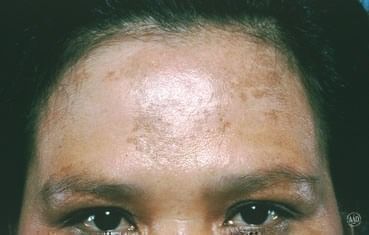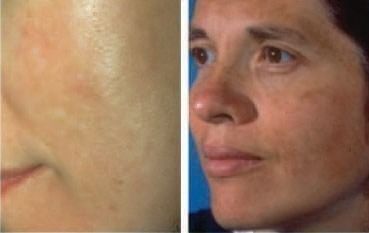Get the App
For Doctors
Login/Sign-up
Last Updated: Aug 29, 2019
BookMark
Report
Melasma : Signs Causes and Treatment
Melasma is a common skin problem. It causes brown to gray-brown patches on the face. Most people get it on their cheeks, bridge of their nose, forehead, chin, and above their upper lip. It also can appear on other parts of the body that get lots of sun, such as the forearms and neck.
One of the most common treatments for melasma is sun protection. This means wearing sunscreen every day and reapplying the sunscreen every 2 hours.
Women are far more likely than men to get melasma. It is so common during pregnancy that some people call it the mask of pregnancy. Hormones seem to trigger melasma.
Melasma: signs and symptoms
Common signs (what you see) of melasma are brown or gray-brown patches on the face. These patches most commonly appear on the:
Cheeks.
Forehead.
Bridge of the nose.
Above the upper lip.
Chin. Some people get patches on their forearms or neck.
What causes melasma?
What causes melasma is not yet clear. It likely occurs when the color-making cells in the skin (melanocytes) produce too much color. People with skin of color are more prone to melasma because they have more active melanocytes than those with light skin.
Common melasma triggers (what starts it) include:
Sun exposure: ultraviolet (uv) light from the sun stimulates the melanocytes. In fact, just a small amount of sun exposure can make melasma return after fading. Sun exposure is why melasma often is worse in summer. It also is the main reason why many people with melasma get it again and again.
A change in hormones: pregnant women often get melasma. When melasma appears in pregnant women, it is called chloasma, or the mask of pregnancy. Birth control pills and hormone replacement medicine also can trigger melasma.
Cosmetics: skin care products that irritate the skin may worsen melasma.
Treatment procedures:
Procedures: if a topical medicine does not get rid of your melasma, a procedure may succeed. Procedures for melasma include a chemical peel (such as glycolic acid), microdermabrasion, and dermabrasion.
One of the most common treatments for melasma is sun protection. This means wearing sunscreen every day and reapplying the sunscreen every 2 hours.
Women are far more likely than men to get melasma. It is so common during pregnancy that some people call it the mask of pregnancy. Hormones seem to trigger melasma.
Melasma: signs and symptoms
Common signs (what you see) of melasma are brown or gray-brown patches on the face. These patches most commonly appear on the:
Cheeks.
Forehead.
Bridge of the nose.
Above the upper lip.
Chin. Some people get patches on their forearms or neck.
What causes melasma?
What causes melasma is not yet clear. It likely occurs when the color-making cells in the skin (melanocytes) produce too much color. People with skin of color are more prone to melasma because they have more active melanocytes than those with light skin.
Common melasma triggers (what starts it) include:
Sun exposure: ultraviolet (uv) light from the sun stimulates the melanocytes. In fact, just a small amount of sun exposure can make melasma return after fading. Sun exposure is why melasma often is worse in summer. It also is the main reason why many people with melasma get it again and again.
A change in hormones: pregnant women often get melasma. When melasma appears in pregnant women, it is called chloasma, or the mask of pregnancy. Birth control pills and hormone replacement medicine also can trigger melasma.
Cosmetics: skin care products that irritate the skin may worsen melasma.
Treatment procedures:
Procedures: if a topical medicine does not get rid of your melasma, a procedure may succeed. Procedures for melasma include a chemical peel (such as glycolic acid), microdermabrasion, and dermabrasion.




+1.svg)
